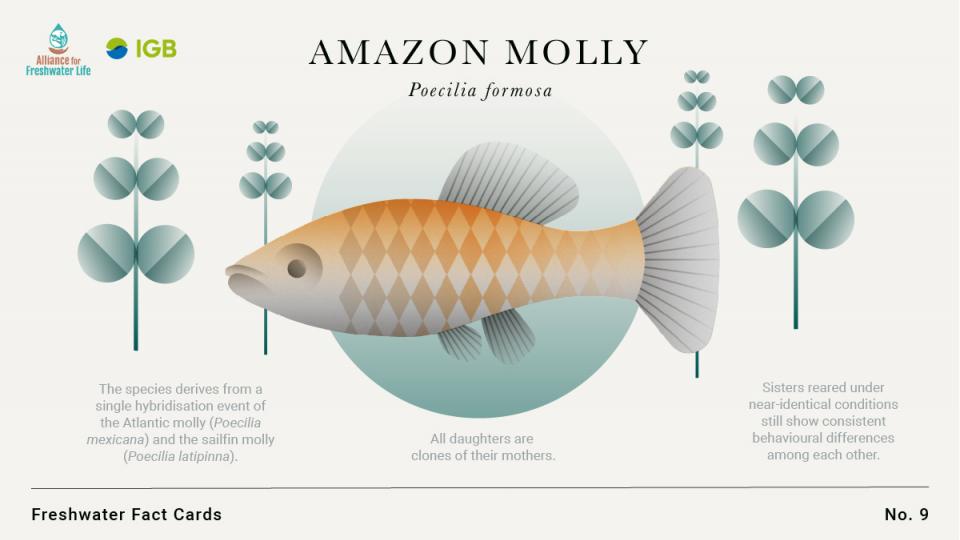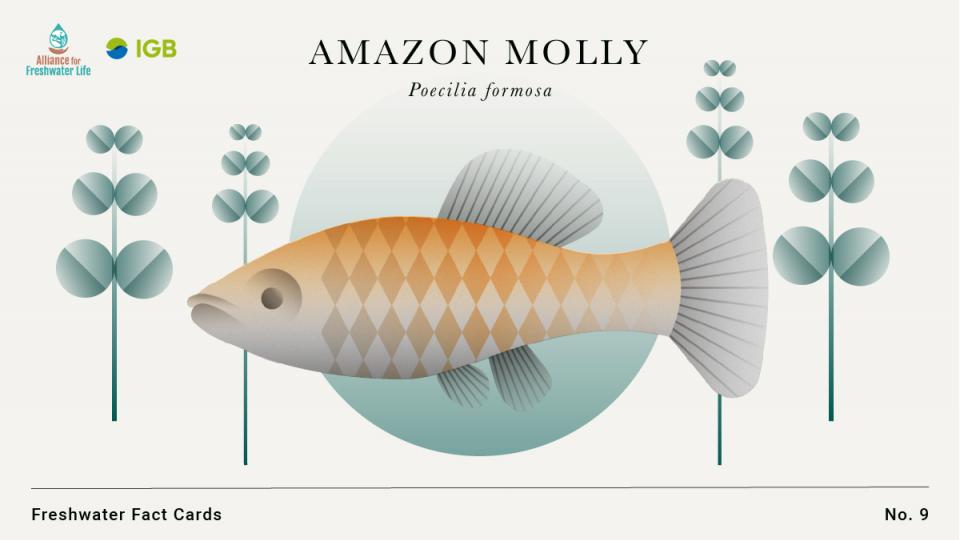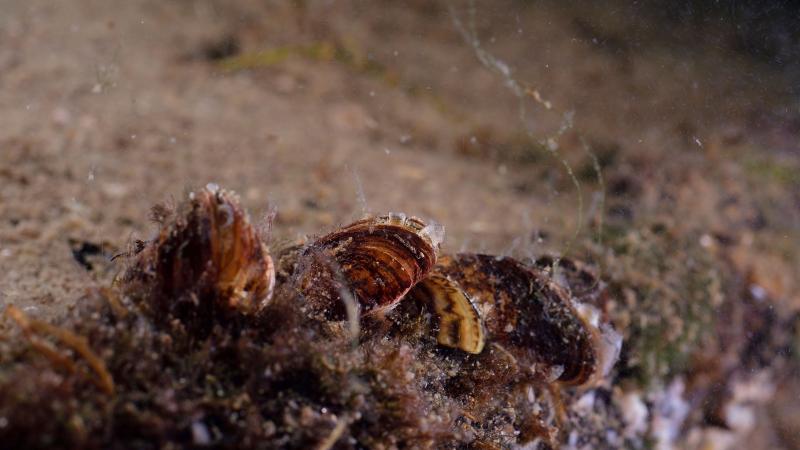
- It is native to freshwater habitats between the lower Rio Grande in the USA and the Tuxpan River in Northeast Mexico.
- The species derives from a single hybridisation event of the Atlantic molly (Poecilia mexicana) and the sailfin molly (Poecilia latipinna).
- Females need sperm from closely related molly species to trigger their egg development, but nothing from the sperm is incorporated into the eggs (except for rare cases where some sperm DNA finds its way into the egg).
- All daughters are clones of their mothers.
- The name is derived from an all-female warrior tribe in Greek mythology, the Amazons.
- Sisters reared under near-identical conditions still show consistent behavioural differences among each other.
- Mutation contributes to the coexistence of genetically different Amazon molly clonal lineages in the wild.
- Its generation time is 3-4 months.

It grows to up to 10 cm in length. It is an all-female species that reproduces gynogenetically. Individuals are able to recognise their sisters (own clone line). The species has existed for about 100,000 years.

The species derives from a single hybridisation event of the Atlantic molly (Poecilia mexicana) and the sailfin molly (Poecilia latipinna). All daughters are clones of their mothers. Sisters reared under near-identical conditions still show consistent behavioural differences among each other.







